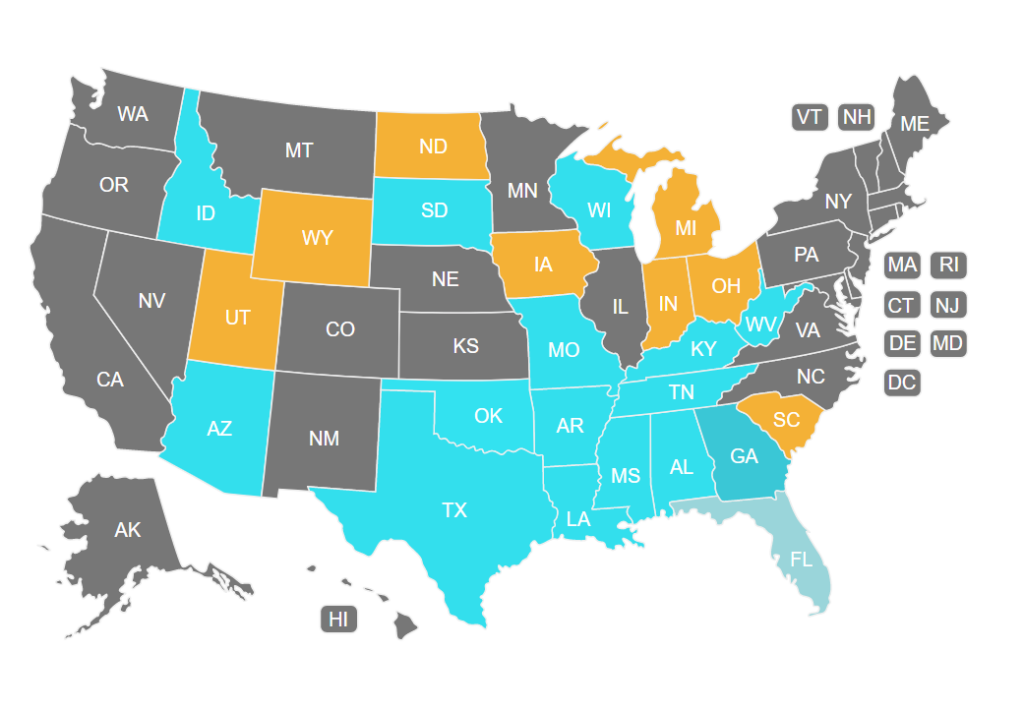Abortion in a Post-Roe America
On June 24th, 2022, at 10:10am, The Supreme Court of the United States ruled in the case Dobbs vs. Jackson Women's Health Organization, that there is no right to an abortion found in the United States Constitution. Supreme Court Justice Samuel Alito in his majority opinion stated boldly and unapologetically: Roe was egregiously wrong.
This Supreme Court Case effectively overturned the Supreme Court cases Roe v. Wade and Doe v. Bolton, which for almost 50 years, allowed the legal slaughter of innocents across the nation, up until the moment of birth, for any reason whatsoever. This result was the murder of over 63,000,000 babies through dismemberment, poisoning, or starvation.
The effect of this decision in the Dobbs vs. Jackson Women's Health Organization is that the issue of abortion is now sent back to the people and to their elected representatives. For Ohio, this means pro-life voters have the chance to have their voices heard like never before.
Abortion is Regulated in Varying Degrees in Each State
In this rapidly changing Post-Roe world, according to the Thomas More Society,
-
23 states have life affirming or life protecting laws on the books
-
6 states, including Ohio, have only moderate laws on the books
-
21 states are aborting affirming states, or are explicitly expanding abortion access
23 states have life affirming or life protecting laws on the books
-
An abortion must be performed before 20 weeks post fertilization except in cases of life endangerment or severely compromised health.
-
The state requires a 24-hour waiting period between the time a woman has an initial consultation and has an abortion. The consultation must be provided in person and the abortionist is required to share information about the abortion procedure and possible side effects.
-
An ultrasound must be performed and the provider must offer to let the patient view the image.
-
Public funding and health plans under the Affordable Care Act can only cover abortions in cases such as a woman's life being endangered or in cases of rape or incest. (Most private insurance plans do cover both medical and surgical abortions.)
Ohio's Heartbeat Law
In April 2019, Ohio enacted Senate Bill 23, the Human Rights and Heartbeat Protection Act, commonly referred to as the Heartbeat Bill. This law prohibits an abortionist from committing an abortion if there is a detectable fetal heartbeat. It also contained more than a dozen other pro-life provisions like:
-
Creating a civil remedy for post-abortive women
-
Setting up a joint legislative committee on adoption
-
Requiring abortionists to report whether an abortion is done for maternal health reasons or not
-
Establishing a fund for foster care and adoption initiatives
-
Required written informed consent from women told about their baby's heartbeat
Unfortunately, Judge Christian Jenkins, of the Hamilton County Court of Common Pleas, issued a temporary restraining order against Ohio's Human Rights and Heartbeat Protection Act, rendering it ineffective until a decision is reached by the court.
Abortion Methods
Abortion Pills - First Trimester Medical Abortion
A medical (or chemical) abortion is a non-surgical form of abortion in which the woman takes pills containing Mifepristone (RU-486) and Misoprostol (or Cytotec) to end the life of the baby. This procedure is performed during the first trimester of pregnancy. The drugs are approved by the FDA for use up to ten weeks since the first day of her last menstrual period (LMP).
Aspiration Abortion - First Trimester Suction D&C
A suction, or aspiration, D&C abortion is a procedure in which a suction catheter is inserted into the mother's uterus to extract the preborn baby. Tools are then used to scrape the lining of the uterus to remove any remaining parts. This procedure is performed during the first trimester, typically during five and thirteen weeks LMP (that is five to thirteen weeks after the first day of the woman's last menstrual period).
Dilation & Evacuation Abortion - Second Trimester
A dilation (dilatation) and evacuation abortion, D&E, is a surgical abortion procedure during which an abortionist first dilates the woman's cervix and then uses instruments to dismember and extract the baby from the uterus. The D&E abortion procedure is usually performed between thirteen and twenty-four weeks LMP (that is thirteen to twenty-four weeks after the first day of the woman's last menstrual period).
Induction Abortion - Third Trimester
A third trimester induction abortion is performed at 25 weeks LMP (25 weeks since the first day of the woman's last period) to term. At 25 weeks, a baby is almost fully-developed and is considered viable, meaning he or she could survive outside the womb. For this reason, the abortionist will usually first kill the baby in utero by injecting a substance that causes cardiac arrest, and induces the mother's labor to deliver her baby stillborn.

